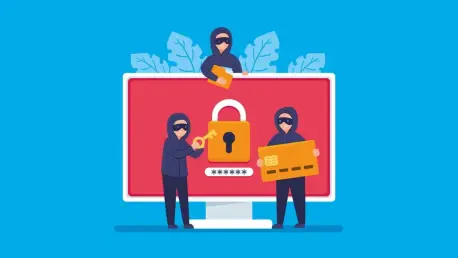In our exploration of cybersecurity and password management, we turn to Maryanne Baines, a seasoned expert in cloud technology. Today, she shares her insights on LastPass, a well-known password manager that’s recently faced scrutiny. With her extensive background, Baines evaluates security incidents, product features, and LastPass’s standing in the competitive market of password management.
Can you provide a brief overview of LastPass and its recent security incidents?
LastPass, once a leader in password management, has experienced significant challenges lately, notably two major data breaches in 2022. These breaches compromised encrypted information such as usernames and passwords, as well as plaintext website URLs. Despite their robust reputation, these incidents have severely affected the company’s credibility and led to serious doubts about their security guarantees.
What are some of the key features that LastPass offers to its users?
LastPass offers a variety of features that cater to different security needs. These include extensive multi-factor authentication options, a one-time password feature, and a Security Dashboard with dark web monitoring. They also have generous free and premium plans, providing options tailored to individual user needs and preferences.
How did the data breaches in 2022 affect LastPass’ reputation and customer trust?
The breaches had a severe impact, as trust is paramount in cybersecurity. Users rely on password managers to keep their most sensitive information safe, and these breaches shattered that trust. LastPass has had to work hard to rebuild its reputation by enhancing its security measures and becoming an independent entity within LMI Parent, L.P., which intends to bolster their defenses further.
What measures has LastPass taken to improve security after these breaches?
Following the breaches, LastPass introduced several improvements. They enforced a 12-character minimum for master passwords to strengthen encryption keys. Additionally, they are investing in a dedicated threat intelligence team to better anticipate and mitigate potential threats. These steps aim to demonstrate their commitment to user security despite past mistakes.
Can you explain LastPass’ plan for enforcing a 12-character minimum master password? Why is this important for user security?
Enforcing a minimum master password length is vital because it increases the complexity and resilience of user passwords, making them harder to crack. A longer password provides a stronger encryption key for vault data, which is an essential safeguard against potential breaches and attacks.
How does LastPass compare to its competitors like Bitwarden, Dashlane, and Keeper in terms of security features?
In terms of features, LastPass stands on par with competitors, offering a similar range of security measures. However, the breaches have placed it at a disadvantage, as Bitwarden, Dashlane, and Keeper have had no such incidents, thereby maintaining a stronger reputation for security and reliability among users.
What are the advantages and disadvantages of LastPass’ free version compared to its premium version?
The free version of LastPass is quite functional, offering unlimited password storage but restricting usage to a single device type. The premium version provides more extensive features, such as advanced multi-factor authentication, emergency access, and the ability to use the service on unlimited device types. The main disadvantage for free users is the limitation to just one device, which might not suit everyone.
How competitive is LastPass’ pricing compared to other password managers in the market? What features come with each pricing plan?
LastPass’s pricing is competitive, especially with its premium plan at $3 per month, which is less than Dashlane but more than RoboForm. The Families plan is also reasonably priced. Both plans include features like unlimited password storage and enhanced authentication options, though the Families plan offers additional management tools for multiple accounts.
Can you explain LastPass’s Security Dashboard feature? How does the dark web monitoring component work?
The Security Dashboard provides users with a security score, assessing the strength and vulnerability of their passwords. The dark web monitoring aspect scans for the user’s information across data breaches on the internet, allowing users to act swiftly if their credentials are exposed, thus adding a proactive layer to password security.
What is the functionality of LastPass’ One-time Password feature? How might this benefit travelers or those using public computers?
The One-time Password (OTP) feature is designed for temporary access without using the master password, which is highly beneficial for travelers using unfamiliar public computers. This feature mitigates the risk of password theft via potential keyloggers, making it safer for users on the move.
How does LastPass implement country restrictions for security? What limitations exist with this feature?
Country restrictions enable users to limit access based on geographic location, adding a layer of protection by blocking login attempts from countries not on the list. However, these restrictions can be bypassed with a VPN, which disguises the actual location, reducing its effectiveness if not tightly managed.
Describe the multifactor authentication options available for LastPass users. What are the differences between free users and premium users?
LastPass offers a comprehensive suite of multifactor authentication (MFA) options. Free users can choose from options like Google or Microsoft Authenticator, while premium users have access to more advanced methods, such as YubiKey or biometric authentication. These additional layers provide more robust security for premium accounts.
Based on your testing, how would you rate LastPass in terms of user interface and performance? What improvements could be made?
The LastPass interface is intuitive but a bit outdated, with some sluggishness in navigation. In comparison to competitors like Dashlane, it feels less polished. Enhancing the design and interface speed could significantly improve the user experience, making it more competitive.
Can you provide a summary of your hands-on experience using LastPass on both web and mobile platforms? Were there any noticeable differences between the two experiences?
Using LastPass on both web and mobile was largely consistent; however, the mobile app offered smoother navigation. Features like fingerprint login were seamless on mobile. The web version felt more clunky, especially with slower load times for some settings, indicating a need for optimizations.
Why would you recommend or not recommend LastPass to potential users? Are there specific alternatives you believe are better, and why?
Given the security breaches, I would hesitate to recommend LastPass without reservations. Alternatives like Bitwarden or 1Password offer comparable features without the tarnished history, providing a more secure and user-friendly experience. They might be better suited for users prioritizing security and reliability.
Do you have any advice for our readers?
Absolutely. In cybersecurity, prevention is paramount. Always use strong, unique passwords, and opt for password managers with a robust reputation for security. Stay informed about updates and vulnerabilities to ensure your digital safety.









